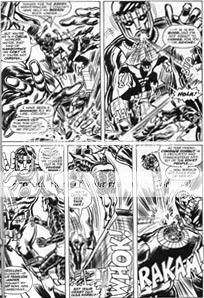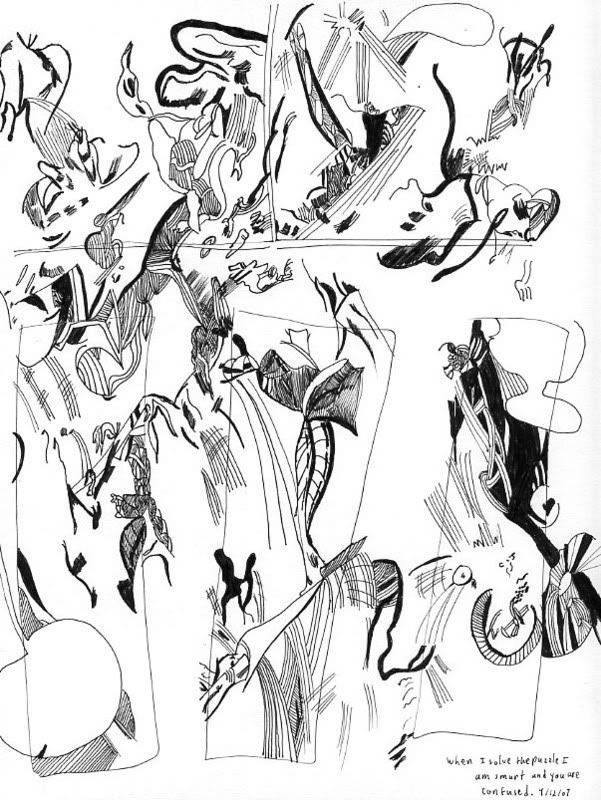This article about contemporary R&B first appeared in a slightly altered form in the Chicago Reader. At the end I’ve included a somewhat snarkier take on the same material, which didn’t quite make it to the final draft.
Underrated Overground
LeToya’s self-titled debut is packed with distorted beats, oceanic harmonies, production values that make it feel as if the music is being broadcast from the precise center of your skull, and miraculous songwriting. “Tear Da Club Up” nicks a perfect Outkast sample, combines it with skittering Aphex-Twin-worthy beats and and adds a stuttered opening that’s both propulsive and sexy; “All Eyez on Me” features a titanic pseudo-Bollywood loop that pretty much defines “fat”. Even the tossaway bits — like a gorgeous, easy-going duet with a Yolanda Adams recording on the Outro — are spectacular. In other words, this album struts. To say it’s pefect pop is a disservice — it’s one of the most accomplished and creative recordings I’ve ever heard, in any genre.
Alas, this is a minority opinion. LeToya’s album has been certified platinum, but the critical response has been, um, tepid. Most outlets haven’t even bothered to review it. Those that did, like RollingStone.com, had little to say, and even less that was laudatory.
Not that this is a big surprise. Few musical genres are as critically despised as contemporary R & B. Read a review of any random urban diva and you’ll learn that her street-posturing is laughable, her lyrics monotonous, and her voice an embarrassment. Even positive assessments have a defensive air — a write-up of “Kelis Was Here” on PopMatters provides the singer’s fans with talking points so they can fight back against their friends’ inevitable skepticism. And last week in the Reader, Jessica Hopper praised Ciara’s latest . . . because it wasn’t quite as bad as Gwen Stefani’s.
Different strokes for different folks, of course — but many of the criticisms leveled against contemporary R&B are confused enough to be actively misleading. Take one of the most common contentions — the argument that the performers’ voices are lousy. I’ve seen this said of Ashanti, Ciara, Kelis, Teairra Mari — even, bizarrely enough, of Mariah Carey. And it’s undeniably true that few of those performing R &B can belt out a tune like Aretha. The thing is, they’re not supposed to. Contemporary R &B has very little to do with classic 60s Southern Soul. Instead, it’s rooted in the high-gloss production and intensive harmonies of Motown and Gamble and Huff. There are a couple of exceptions: Shareefa’s debut deftly combines old school grit with new school gloss, and Faith Evans unbelievable“Mesmerized” sounds like Stax on steroids. In general, though, a big voice and giant production add up to a faux- Broadway disaster (hello, Christina.) Contemporary R&B just works better with less dramatic singers. Tweet and Monica, for example, both use smooth, creamy deliveries that swirl languidly into the backing tracks. And then there’s Cassie, whose vocals might be kindly described as wispy. That doesn’t hurt her a bit, though; on her debut, her voice is so processed and multi-tracked that the singer becomes just one more electronic blip among many — part of a robotic, flawless glucose-delivery system that makes Pizzicato Five sound clumsily robust.
Even if every singer in the genre could holler like Marion Williams, though, I doubt that it would matter. Critics want scrappy; they want subversive —or at least not ingratiating. As Jim DeRogatis puts it in his chronicle of 90s music, “Rock’n’roll is a spontaneous explosion of personality and it is an attitude.” That just doesn’t describe R &B at all. In the first place, the female-dominated world of contemporary R&B doesn’t really do misogyny —still the easiest way for rock, hip hop, punk and country artists to demonstrate their edginess. And besides, it’s impossible to pretend that a pre-packaged product of reality-TV like Danity Kane is in any way scrappy. Thus, though divas do occasionally talk about keeping it real, the ambivalence about success and selling-out that is the signal of authenticity in hip hop and alternative barely exists in R&B. On the contrary, performers tend to cultivate a girly, XXXOOOO relationship with their fans. That’s why Beyonce can cheerfully shill for her latest Hollywood movie, Dreamgirls, on B’day and present it as an extraspecial bonus moment for her listeners.. And it’s why she and her rivals all shorten their names into diminutive, corporate one-word brands.
I must admit that, personally, I find this straightforward willingness to embrace all things commercial rather refreshing. Even if you’re wedded to the dubious concept of mass entertainment as subversion, though, contemporary R&B does have something to offer. In the first place, it’s largely performed by lower-class, teen-aged women of color. Indeed, its perhaps the only way these women have to reach a large audience . Sure, sometimes what they have to say isn’t any more thoughtful than “the junk in my trunk’ll put a bump in your pants,” as Brooke Valentine quips. But you don’t have to listen to too many tracks before you’ll find songs that tackle more demanding material.
In fact, the common thread running throughout contemporary R&B is neither drippy sentiment nor mindless partying. Instead, the performers insist on self-worth, independence and strength, even as they acknowledge the importance of close relationships. Like classic country (or classic R &B for that matter ) the music is about love, joy, loss and — most of all — about dignity.. Thus, in “No Daddy,” Teairra Mari expresses sympathy for and solidarity with sex workers without lapsing into moralism or pity; no mean feat. (No I don’t strip in the club/ Don’t trick in the club/ But I got friends that do/ So my girls that’s getting the dough/ The best way that they know/ No hate girl, I got you). Mya’s “Late” is a hilarious account of an accidental pregnancy — with some useful tips on proper condom care thrown in. Cherish’s “Oooh” is about teen abstinence. Kelis’ “Ghetto Children” with its heart-breaking refrain, “no matter what teacher say to you/ ghetto children are beautiful” is about the best two-line condemnation of our educational system you’re likely to get.
The best thing about contemporary R&B isn’t the lyrics, though. It’s the music. Sometime in the late 90s, R&B moved away from the groove-based vibe of TLC and Timbaland’s early work and towards extremely complex song-writing. At the same time, production capabilities, already phenomenal, went into the stratosphere. The result is music of painstaking craft; layers of sound morphing and twisting through bridges and intricate arrangements, while a multi-tracked vocalist sings rings around herself. Often it’s impossible to even tell what instruments are playing, if any, just as it’s difficult to know who’s responsible for the final product — most songs seem to have three to five writers, not to mention the producers and executive producers. It’s a bit like the shoegazing pop of the nineties and a little like the most polished Philly Soul, though in many ways its more intense than either. Certainly, it can tip over into bombast or undifferentiated mush. At its best though it’s unearthly. LeToya and her peers are pushing against the boundaries of how music can be made and what it can sound like even as they remain firmly in a popular idiom. In this, they’re not unlike the first great swing or rap performers. And like those models, it may take a decade or two before critics start to fetishize them. In the meantime, everybody else has the opportunity to listen to some of the best American music ever made, right there on the top-40 station of your choice.
——————
The following was originally intended as the beginning of the article, but didn’t quite make it for one reason and the other….
In his much-lauded book Lipstick Traces, rock critic Greil Marcus celebrated the revolutionary power of pop music — with some notable caveats. Elvis, the Beatles, and the Sex Pistols, Marcus gushed “raise[d] the possibility of living in a new way” because they “”assaulted or subverted social barriers.” Michael Jackson’s album Thriller, on the other hand, “crossed over [social barriers] like kudzu.” Marcus then goes on to sneer at Jackson because his audience was largely composed of white people. Marcus does not state, but I suppose we are meant to presume, that Johnny Rotten was some sort of hero to black youth.
Marcus’ comments dredge up some ugly truths. Like America itself, American music is, (A) segregated, and (B) in deep denial. For at least 30 years now, top 40 has been dominated by black-derived dance-pop, and (especially recently) black artists. Yet white rock critics (that is to say, almost all rock critics) have never really accepted this. Instead, as the complexion of pop music has changed, critics have grumpily declared mainstream to be crap, and gone out desperately looking for some “alternative.”. But when you take into consideration everything from the hysteria of anti-disco record burnings to the fervent hallelujahs which greeted the release of “Elephant”, the much-touted alternative to mainstream fare looks suspiciously like a desperate search for a great white hope.
To be clear, I am not saying that it is racist to like rock music or to dislike black music, or any combination of the two. Aesthetic preferences aren’t political positions, and I’d personally rather listen to Led Zeppelin than Muddy Waters, for what that’s worth. But Marcus and his sort go beyond a simple statement of aesthetic appreciation. For them, some middle-class white dude strumming a guitar he doesn’t even know how to play is a revolution on disc, upsetting the very fabric of our social order. And, conversely, a working-class black guy singing his heart out over a computer-generated rhythm track is a sell-out, demonstrating the — ahem — pale monotony of our popular landscape. Liking a genre is one thing. Claiming transcendent moral superiority because you like a genre is another.
________________


